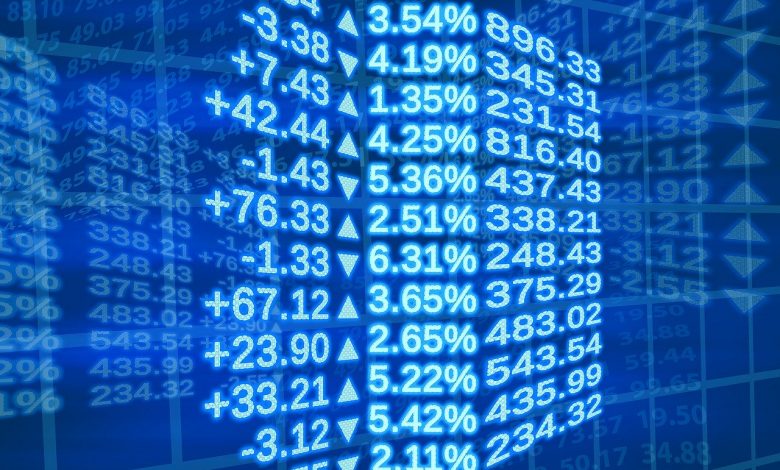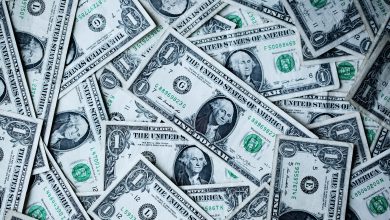The Largest Market in the World

The derivatives market is one of the most influential markets in the world, due to its size and interconnectedness with every other market. In the movie The Big Short, derivatives were briefly discussed as one of the underlying catalysts that caused the financial crisis of 2008. The biggest thing about derivatives is that, due to their versatility, they can be applied to almost any financial instrument – from stocks to mortgage bonds – inflating the events in any given market due to their ripple effect. Simultaneously, the term “derivative” will also just about instantly put to sleep anyone who’s not a financier. But how can derivatives be useful for everyday investors, and what’s important (even interesting!) to know about them?
What is a Derivative?
A derivative is any asset whose value is based on the value of something else – in other words, it derives its value from another asset. Called the “underlying” asset, the asset from which a derivative derives its value can be virtually anything, though they’re usually based on things like stocks, bonds, currencies, interest rates, or commodities. Derivatives open the door to a wide range of investment options, and allow investors to take a stake in something like corn or oil, of which they wouldn’t normally buy up physical shares (i.e. barrels of oil or bushels of corn). Derivatives also offer investors a way to hedge their risk, allowing them to take the other side of a trade or investment they already have in the event the original trade doesn’t go their way. For everyday investors, derivatives come in a couple different forms, though institutional trades make up the majority of the market in swaps.
Futures
Futures allow two parties to agree to a deal that they will execute at a later point in time regardless of the current conditions at that time. For example, if you thought the price of sugar would go up, you could enter into a futures contract where you agree to pay a set price for the sugar. Someone who thinks the price will go down will take the other side of the contract. If, indeed, the price of sugar does go up, you would execute your contract at the agreed upon price, resulting in you holding a large amount of sugar (in the form of derivatives) bought at a major discount that you can then resell back into the market at full price. Futures are standardized contracts that trade on exchanges, such as the Chicago Mercantile Exchange (CME).
Options
Most investors have heard of or even have some experience with options. Options give a buyer the option, but not the obligation, to purchase an asset at an agreed upon price in the future. Versus futures contracts, where parties are obligated to fulfill the transaction according to the terms, options contracts can executed – or “exercised” – at any point on or before their expiration date. In addition, the contracts themselves can be sold (in the event the contract becomes more valuable, making its price go up) or if conditions are not favorable, the option can be allowed to simply expire, incurring the buyer no additional cost other than the price paid for the option itself.
Swaps
Swaps, unlike futures and options, are purely over-the-counter (OTC) trades. This means they are privately brokered between two parties, such as banks or other large funds. Swaps exactly allow the two parties to exchange – thus “swap” – their revenue streams from an underlying asset that each holds. In swaps, generally one side of the trade wants to benefit from a fixed rate of something while the other side wants to bet on that same asset’s fluctuation. Thus for one side, generally swaps are a hedge against risk (a fixed rate being provided to them) while for the other side they’re a play to make money. The credit default swaps that were made mainstream by The Big Short were this type of derivative. They exchanged default risk for fixed payments, much like paying premiums to an insurance company in exchange for covering unforeseen medical costs. Swaps can facilitate a large number of customized arrangements, but the most well-known types are interest rate swaps and currency swaps.
Pros & Cons of Derivatives
Besides being an investment instrument, derivatives can offer businesses or other organizations that need to rely on fixed costs ways to manage their outflows by removing themselves from the risks associated with fluctuating prices. This allows companies to more accurately account for costs over the long term, such as the next quarter or year. Derivatives also offer firms a way to hedge their risk, taking a potentially profitable position on the other side of a current investment with only a small capital outlay (in the form of the contract price paid for an option, for example). Giving businesses a way to profit in the event of an unexpected circumstance, companies can use derivatives to help minimize their losses in case of an undesirable market outcome. At the same time, derivatives have downsides. Predicting the direction of markets in general terms can often be difficult, and derivatives rely on predicting the price of an asset on a specific date or within a certain time frame. Markets can also be inherently and extremely volatile in the short term, and derivatives trading often offers high amounts of leverage that can exponentially multiply losses when used for speculation. In the derivatives market for swaps, meanwhile, the complex nature of many of the contracts makes accurately determining their value extremely difficult, leading to mispricing potential or even the inability to effectively complete due diligence when determining the credibility of such derivatives.
The derivatives market, for better or worse, is the market with the most influence in the world. The shocking part is this: the sheer volume of assets created on top of other assets dwarfs the U.S. stock market. To compare, the equity markets of the U.K., Japan, China, and the Eurozone combined are approximately equal to the value of the U.S. stock market. The worldwide derivatives market, meanwhile, is approximately 20 times the size of that – on the low end of the estimate. The high end suggests that the real value of the opaque worldwide derivatives market could be hovering somewhere around $1.2 quadrillion – more than three times the size of global debt and global real estate combined, and a valid reason for the collapse in one small corner of it in 2008 sending world markets crashing.



